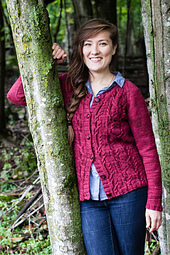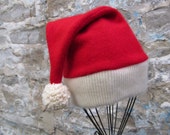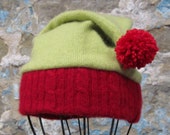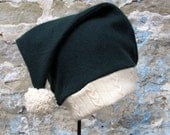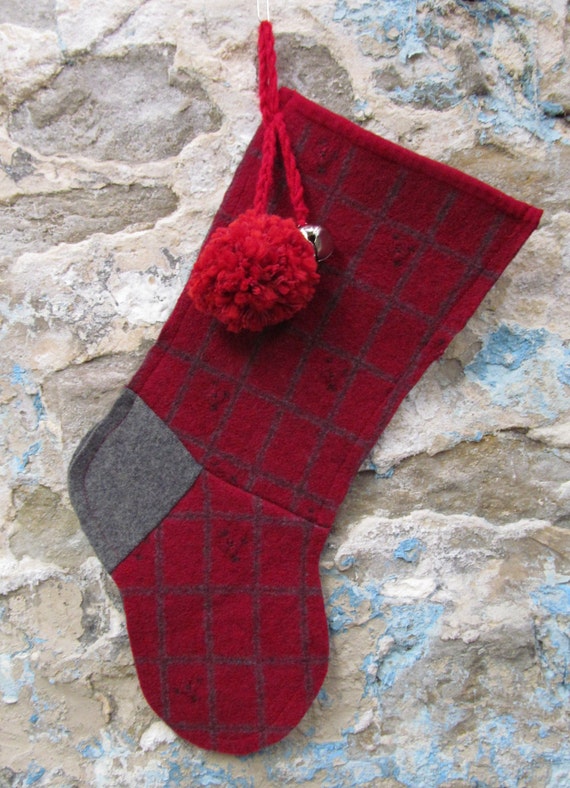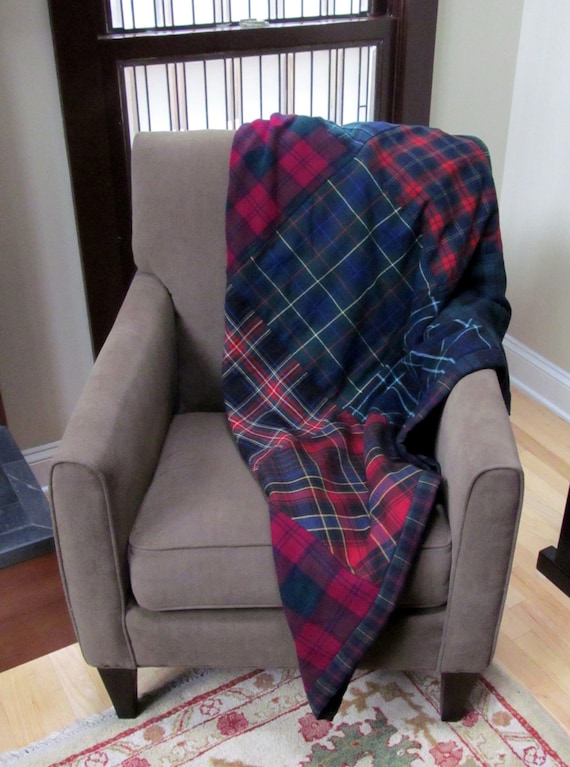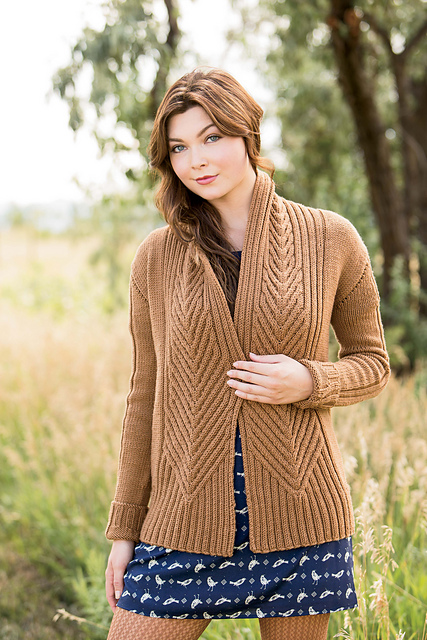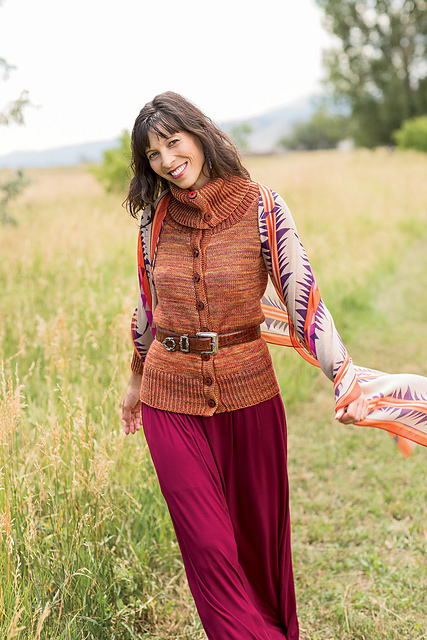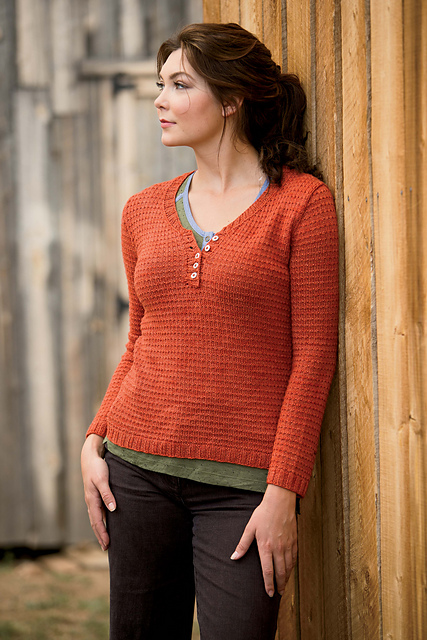I had to break my review of
Vogue Knitting's Holiday 2013 issue into two posts because I want to spend a whole post talking about what just narrowly misses being one of my favorite designs of all time: Shiri Mor's geometric hourglass cardigan. The VK staff must have recognized it's greatness, because they gave the design two full page photos. (Of course, I would have preferred one of the nearly identical photos to be a back view, but that's what
VK360 is for.)
This design has so much of what makes a figure flattering sweater: fitted shape, vertical design elements, diagonal design elements, and a cardigan style. I love the sheerness, and the fact that it is shown in one of my favorite colors.

But it also has the geometry that I've always loved in
Norah Gaughan's designs. The design consists of hexagons which form the sides and wrap to the center front and back. The remaining spaces are filled in with triangles, except, of course, for the sleeves. All the pieces are connected by bands of crochet done in a heavier weight yarn for contrast. The hexagons meet to form an hourglass shape, which is not only very on-trend, but super flattering. My hourglass variation appeared earlier this year in the
Spring/Summer edition of Noro magazine.

So, what's not to love about Shiri's design? The pattern isn't written for my size. In fact, it's not written for anyone with a chest size larger than 40", which includes the majority of American women. In Shiri's defense, and by that I really mean the VK tech editors who grade patterns up and down from the original sample, as designed, the sweater does not lend itself to proper fitting of larger sizes. Let's take a closer look at the placement diagram.
The shaded shape in the diagram, #9, is the armhole opening. Since I have wrangled a few knitting and sewing patterns in my day, I can tell you that a diamond shape is not the natural shape formed where your arm meets your torso. It's much more of an oval with a flat bottom. Skinny people can get away with this sort of insanity because there isn't much fabric there to begin with. But, in larger sizes, and especially for those of us with chubby arms, and this armhole shape becomes very uncomfortable.
(I have to add here that this is where many top-down designs go wrong. I've seen too many top-down patterns that don't cast on additional stitches when they split for the armholes. What happens then is you end up with the unnatural pointed shape here.)
The other argument against adding larger sizes is that to add circumference, the size of the hexagons has to grow. At some point that geometry no longer works, but I would suggest that it actually would improve the fit for a few sizes past 40". If the hexagon were taller, it would be closer to the armpit. If you then eliminated the #8 triangles, you'd have a triangle-shaped armhole which would be closer to human anatomy. If necessary, you could make some tiny #8s to fill the corners, but I think the flexibility of knitted fabric would fill in the shape nicely.
While I am re-designing this beautiful sweater, I would personally also square off the upper body triangles to turn the drop shoulder into a set-in sleeve. A lot of pattern adjustment would be involved (so I'll leave that discussion for another time), but it would, again, be a big improvement in fit, especially in larger sizes.
As I sum up everything I would change about this sweater that I love, I am perhaps reminded of why I knit more skirts than sweaters. Skirts have only three crucial fit points: waist, hip and length. There are so many more fit points and issues in a sweater that need to be addressed before I'll invest huge amounts of my time. I want to love what I knit, and the only way to achieve that is to choose patterns that will flatter and adjust fit to your figure.









